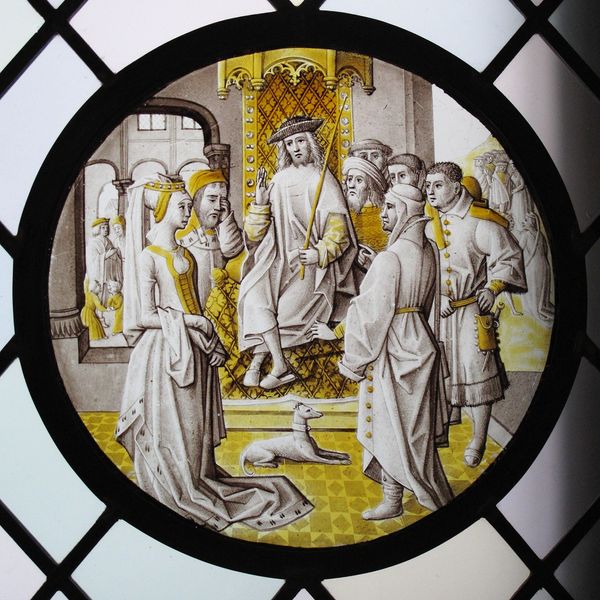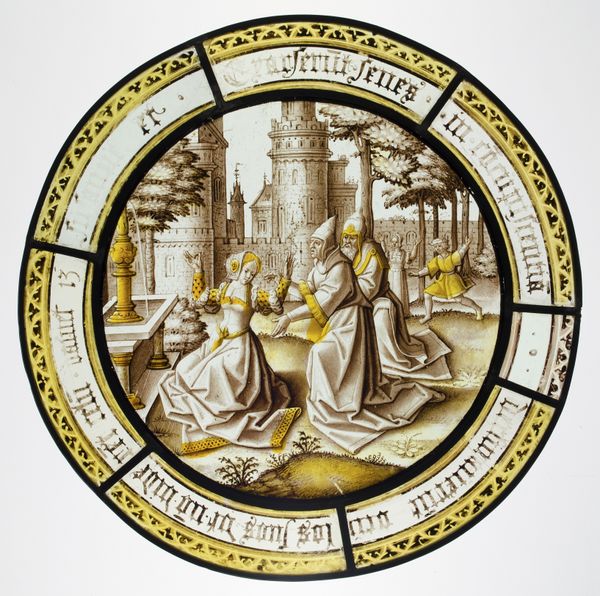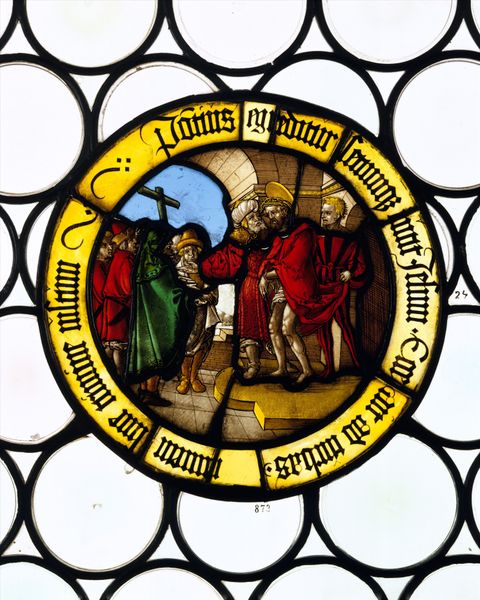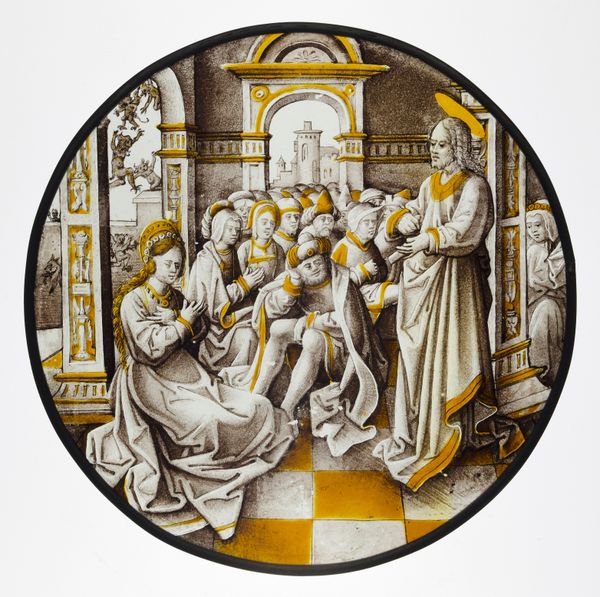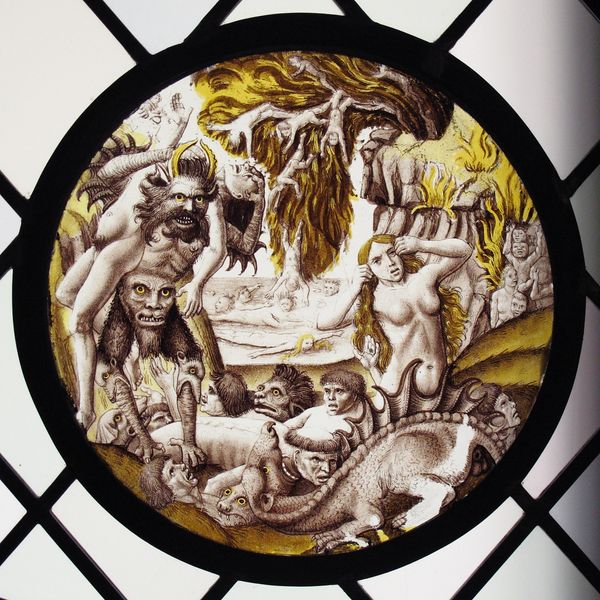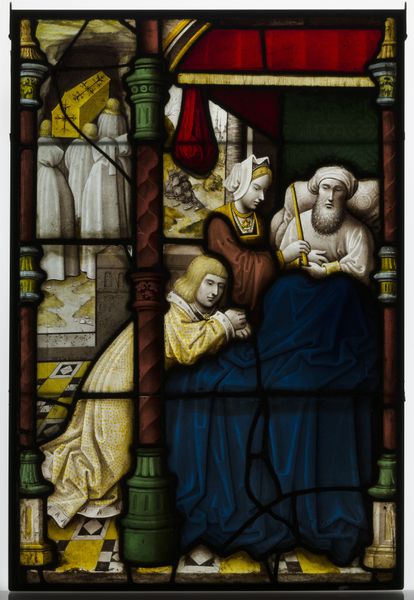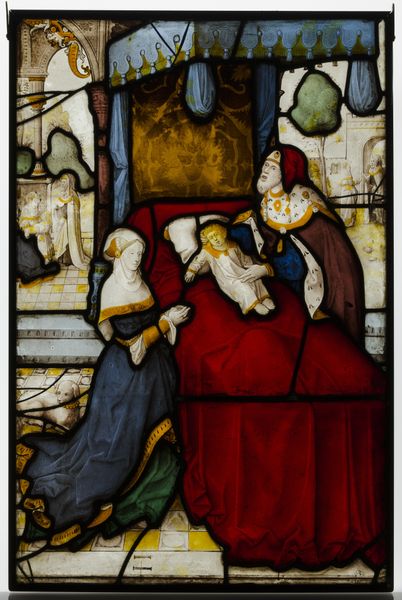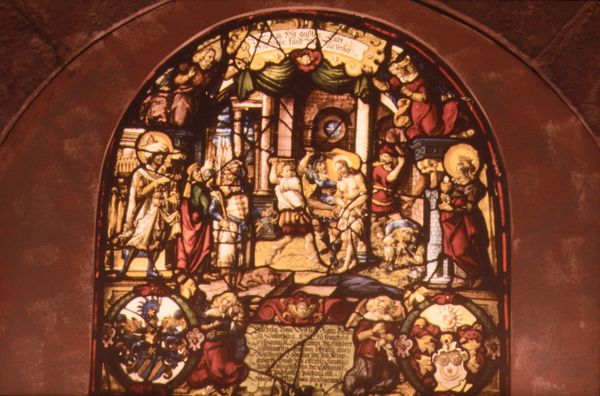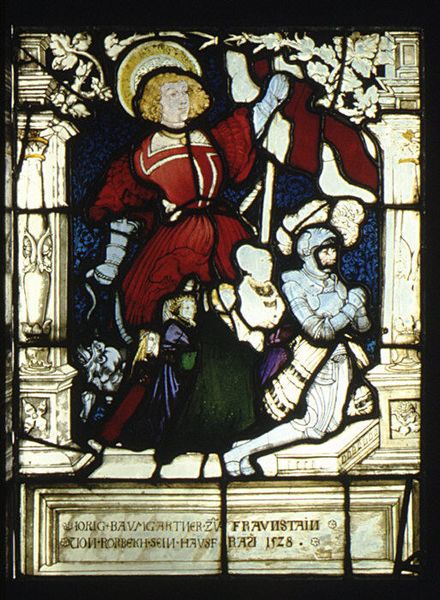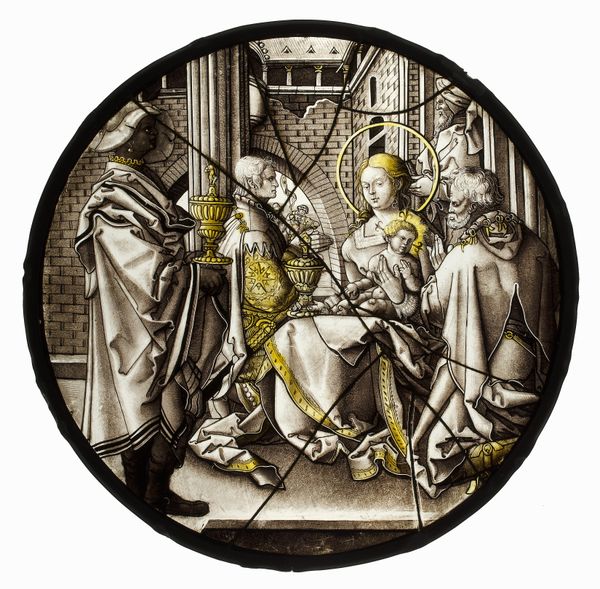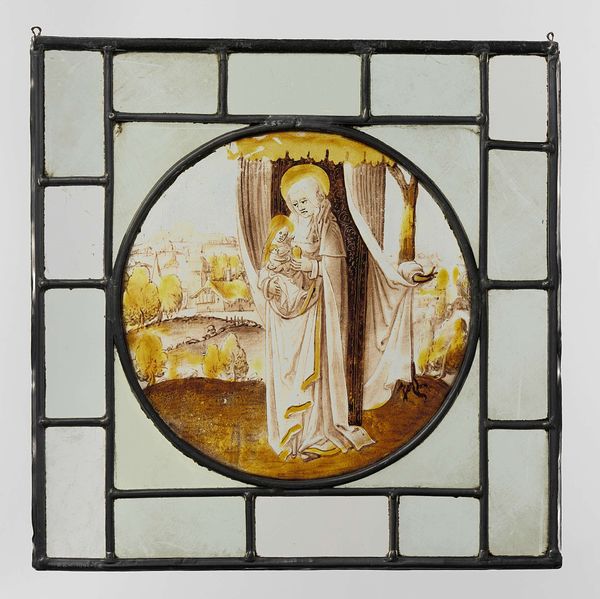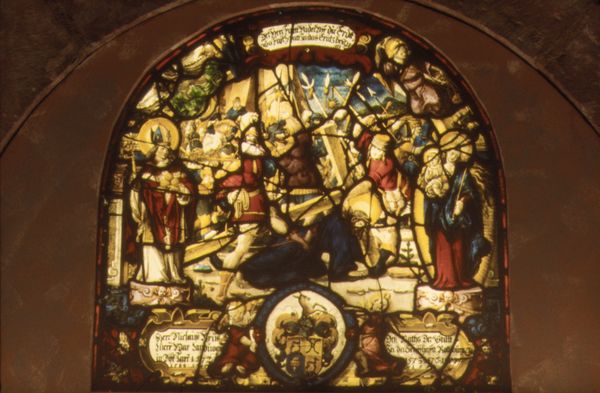
tempera, painting, glass
#
tempera
#
painting
#
sculpture
#
figuration
#
madonna
#
glass
#
child
#
history-painting
#
italian-renaissance
#
miniature
Dimensions: Overall: 8 5/8 in. (21.9 cm)
Copyright: Public Domain
Curator: Editor: Here we have "Roundel with the Adoration of the Magi," a tempera on glass painting by Hans Memling from around 1500. The circular format is really interesting, almost like a window looking into this biblical scene. How do you interpret this work, especially considering its historical context? Curator: It's compelling, isn't it? This work invites us to consider the intersection of religious devotion, artistic patronage, and societal power structures during the Renaissance. Notice how Memling situates the Holy Family within a detailed architectural setting. Consider how the act of adoration by the Magi, often depicted with richness and exoticism, can be viewed through a lens of intercultural exchange and its inherent power dynamics. How might this imagery reinforce or perhaps subtly question prevailing societal norms concerning race, class, and gender? Editor: That's fascinating. I hadn’t really thought about the power dynamics at play. It does seem to idealize a very specific perspective. Curator: Exactly. These representations aren’t neutral. The roundel's materiality—tempera on glass—further complicates our understanding. It served a specific purpose, within a specific social and economic class. Where do we locate the female voice? How is power demonstrated and negotiated in the visual rhetoric, especially with how women are often rendered and perceived differently to male archetypes? Does that affect your response? Editor: It definitely makes me see it differently. Thinking about who this was made for and what messages it was meant to send—it adds so much depth. Curator: Precisely! By engaging with these complex questions, we can move beyond a purely aesthetic appreciation and grapple with the profound ways in which art both reflects and shapes our understanding of the world. What might we say, thinking of this ‘window’ on society? Editor: I now understand that analyzing the intersectional contexts within which the painting exists—its origins, patronage, social functions—makes this roundel much more thought-provoking than I first realised. Curator: Absolutely. Now when you look at art, I hope it acts as a trigger to interrogate its presence as it relates to culture.
Comments
No comments
Be the first to comment and join the conversation on the ultimate creative platform.
